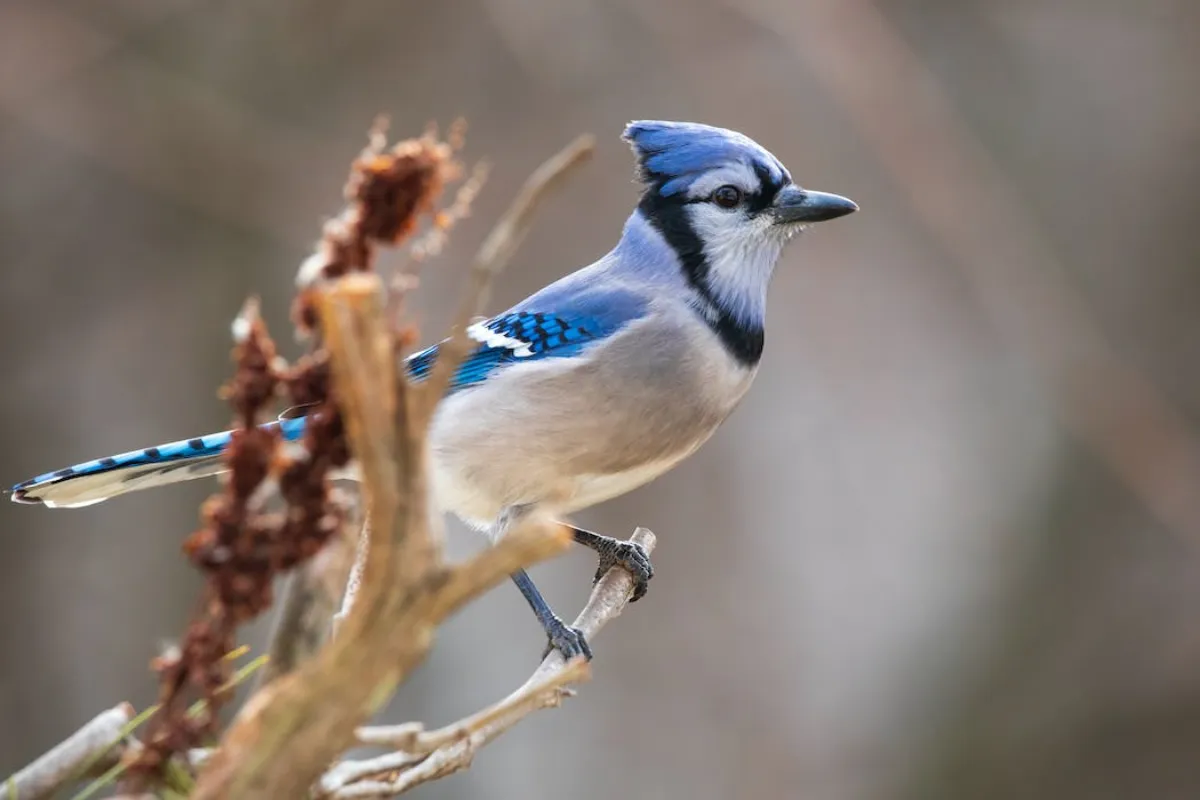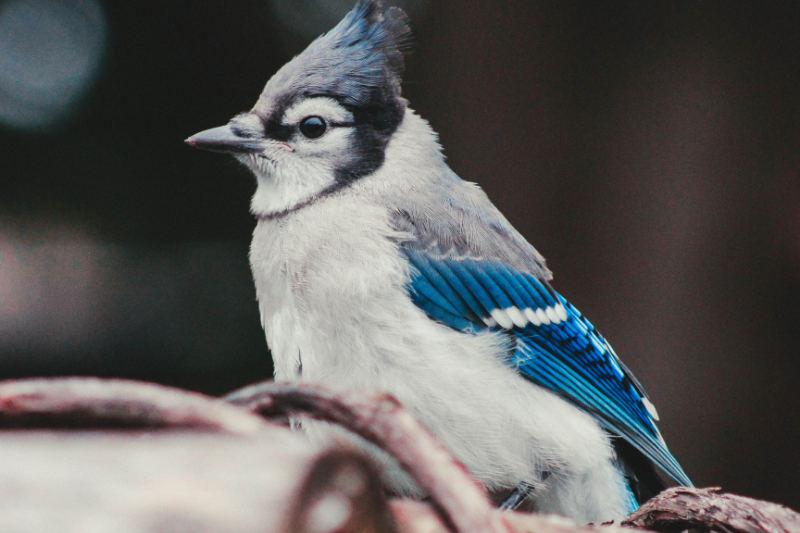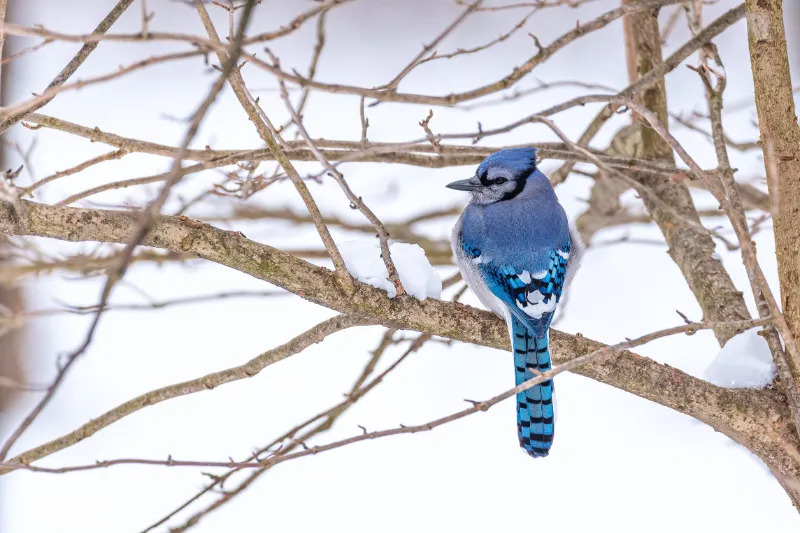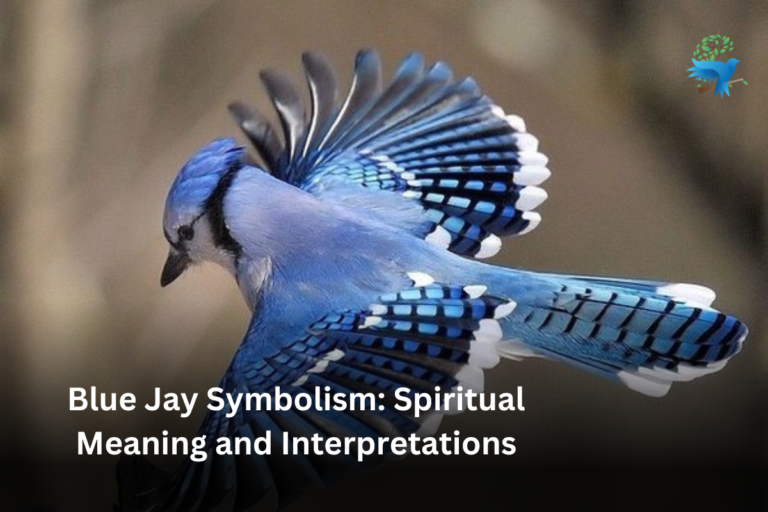Are Blue Jays Aggressive Birds? Truth About Their Aggression

Blue jays are one of the most recognizable bird species in North America. Known for their striking blue feathers and loud calls, these birds are a common sight in parks, forests, and even suburban backyards.
But are blue jays aggressive birds? This is a question that has been asked by many bird enthusiasts and researchers.
In this article, we will take a closer look at the behaviors of blue jays to understand whether they are aggressive birds.

Blue jays are members of the Corvidae family, which also includes crows, ravens, and magpies. They are known for their distinctive blue and white plumage, prominent crest, and loud, harsh calls.
These birds are omnivores and feed on a variety of foods, including insects, seeds, nuts, and fruits.
Blue jays are also known for their intelligence and are capable of complex problem-solving and social interactions.
Blue Jay Characteristics And Behaviour
Blue jays are medium-sized birds, with a length of about 9 to 12 inches and a wingspan of around 13 to 17 inches.
They are sexually dimorphic, with males being slightly larger and more brightly colored than females.
In addition to their distinctive plumage, blue jays are known for their vocalizations, which include a variety of calls, songs, and even mimicked sounds.
They are also social birds and are often seen in groups or pairs.
Are Blue Jays Aggressive Birds? A Closer Look at Their Behaviors
In addition to their physical traits, blue jays also exhibit a variety of behaviors that can be seen as aggressive. For example, they are known to chase other birds away from food sources, and will even attack other birds if they feel threatened.
However, it is important to note that many of these behaviors are also seen in other bird species.

Image Source: Photo by Robert Pointer: Pexels.com
For example, crows and ravens are also highly territorial and will defend their feeding and nesting areas.
While blue jays may be more vocal and confrontational than some other bird species, it is not necessarily accurate to say that they are more aggressive.
Aggressive Behaviors of Blue Jays
While blue jays are not inherently aggressive, they can display aggressive behaviors in certain situations.
For example, when defending their territory or food sources, blue jays may become aggressive towards other birds or animals. They may also become aggressive if they feel threatened, for example, if a person or animal gets too close to their nest.
Examples of aggressive behavior in blue jays include chasing, pecking, and swooping towards other birds. They may also make loud calls and fluff up their feathers as a display of dominance.
While these behaviors are not typically directed towards humans, some people may perceive them as aggressive and may feel threatened or intimidated.
Reasons for Aggressive Behaviors
There are several reasons why blue jays may display aggressive behaviors. One possible explanation is that they are defending their territory or food sources.
Blue jays are highly territorial birds and will aggressively defend their territory against intruders.

Similarly, if food is scarce, blue jays may become more aggressive in their efforts to secure food.
Another reason for aggression in blue jays is related to breeding behavior. During mating season, male blue jays may become more aggressive towards other males in their efforts to attract a mate. This can lead to conflicts and displays of dominance
Human
Blue Jays make nests in deciduous forests and coniferous forests. Outside that, you can find them finding making nests near resident areas.
Seeing humans coming towards their nest, they think of them as a predator and try to harm them. They do it to make them terrified and walk away.
Predator
Blue Jays are noisy in nature. Their noise is given because of their aggressive nature. When they are attacked by big birds like hawks and eagles. They make a noisy sound to fly them away.
So you got the understanding behind their noisy voice. It helps to prevent getting eaten.
Small Creature
Blue Jays are small. Even being small they don’t like other small creatures near their territory. They feel such creatures as an unwanted guest.
The Blue Jays bird doesn’t want any other creature to make a nest near theirs. So another reason behind harming small creatures is to prevent them to make nests near their territory.
Territory
If you see closely the aggressive creature are the ones who fight for their territory. Since Blue Jays are aggressive in nature, they fight for the territory and protect them.
Blue jays are known for their boldness and territorial nature, and these traits can result in aggressive behavior towards other birds. This aggression can have significant impacts on other bird species in their ecosystem.
| Read More: Why Do Blue Jays Mimic Hawks? Batesian mimicry >>>
Blue jays have been observed attacking and displacing other bird species from their nests, which can lead to a decrease in the population of these species.
Are Blue Jays aggressive on Humans?
This aggression can also impact humans who live near blue jay habitats. Blue jays are known to become aggressive towards humans if they feel threatened or if they perceive a human as a potential threat to their nest or young. This can lead to potential physical harm to humans, especially if they get too close to a blue jay nest.

Furthermore, blue jays have been known to damage property, such as outdoor furniture and vehicles, as a result of their territorial behavior. This can result in financial consequences for humans who live near blue jay habitats.
Examining Aggressive Behavior in Blue Jays
When you started knowing Blue Jays bird. You will see them as very aggressive at first. But when you get all the knowledge about them you will know the actual reason behind their nature.
Ornithologists have found many reasons behind Blue Jay’s aggression. In simple words, they it do survive in the woods. If they see some food, they will scare away other creatures to eat it.
| Read More: How To Attract Blue Jays- A Complete Guide >>>
Simply this can be understood as every animal needs food to eat. Talking about their territory, they want their home to protected as all creatures want. Since they are already aggressive in nature, their bodies react automatically to the situation.
If there are any invaders, they will scare them away either with their noisy voices or harming with their beaks.
Dealing with Aggressive Blue Jays
It is very easy to understand Blue Jays bird. There is some precaution to take before dealing with them.
So what you could do is not to make that bird aggressive? Blue Jays are very aggressive when you get close to their nest. So to avoid it, keep their distance from their nest.
If the Blue Jays ever make a nest near your house, you could put some nyjer thistle seed. It is because the bird doesn’t like such seeds and tries to avoid them.
So, they will fly away from that place if they don’t find many things to eat.
Frequently Asked Questions
What is Blue Jay’s behavior?
Blue Jays bird is very aggressive in nature.
Do Blue Jays birds have other smaller birds?
Yes, any bird that comes inside Blue Jay’s bird territory is seen as their enemy.
Why is Blue Jays bird so smart?
Blue Jays bird’s mind is bigger in ratio to the body in comparison to other creatures. Thus, this can be the reason behind their being smart.
Who Blue Jays bird rubs ants in their body?
Blue Jays rub aunts on their bodies to show their aggressive nature.
Does Blue Jays harm humans?
Yes, if any human comes in contact with their territory.
Why do Blue Jays bird hide their food?
If the Blue Jays bird is full, they keep hiding their food to eat it later.
Do Blue Jays birds eat hawks and eagles?
No, they don’t eat big birds like hawks and eagles but make them fly away with their noisy voice.






